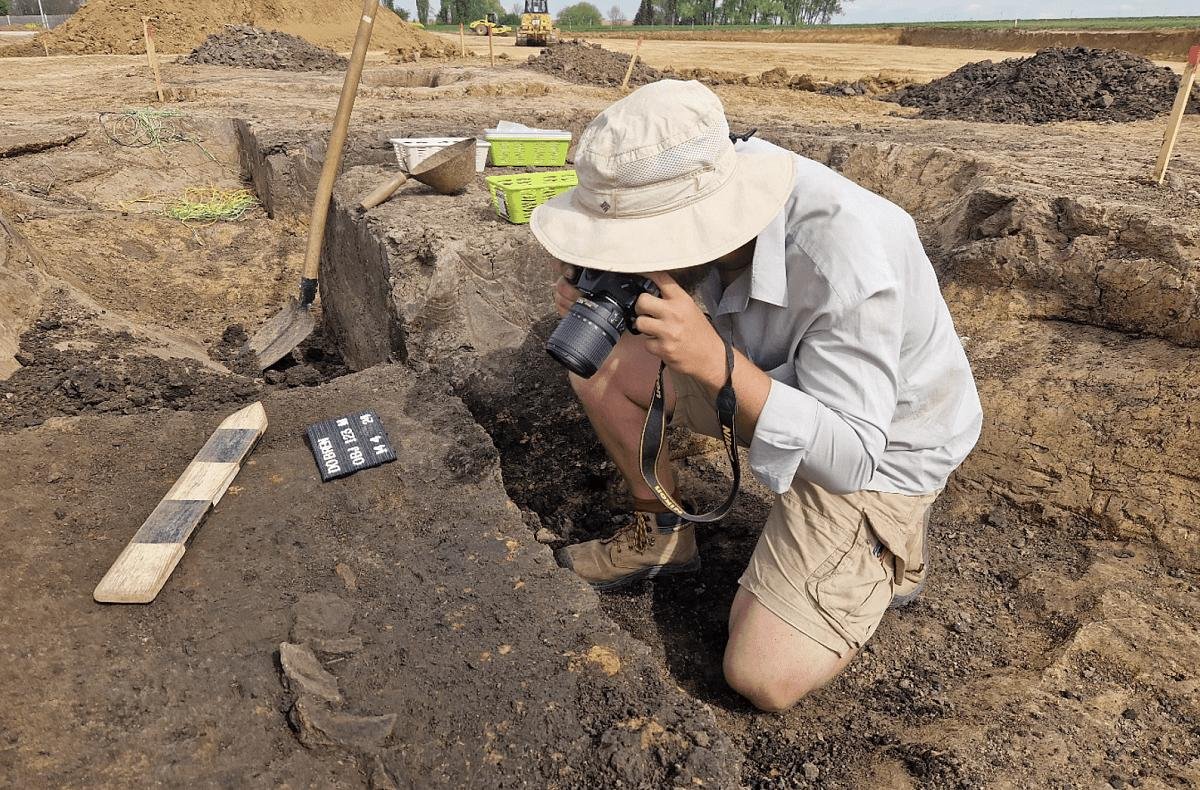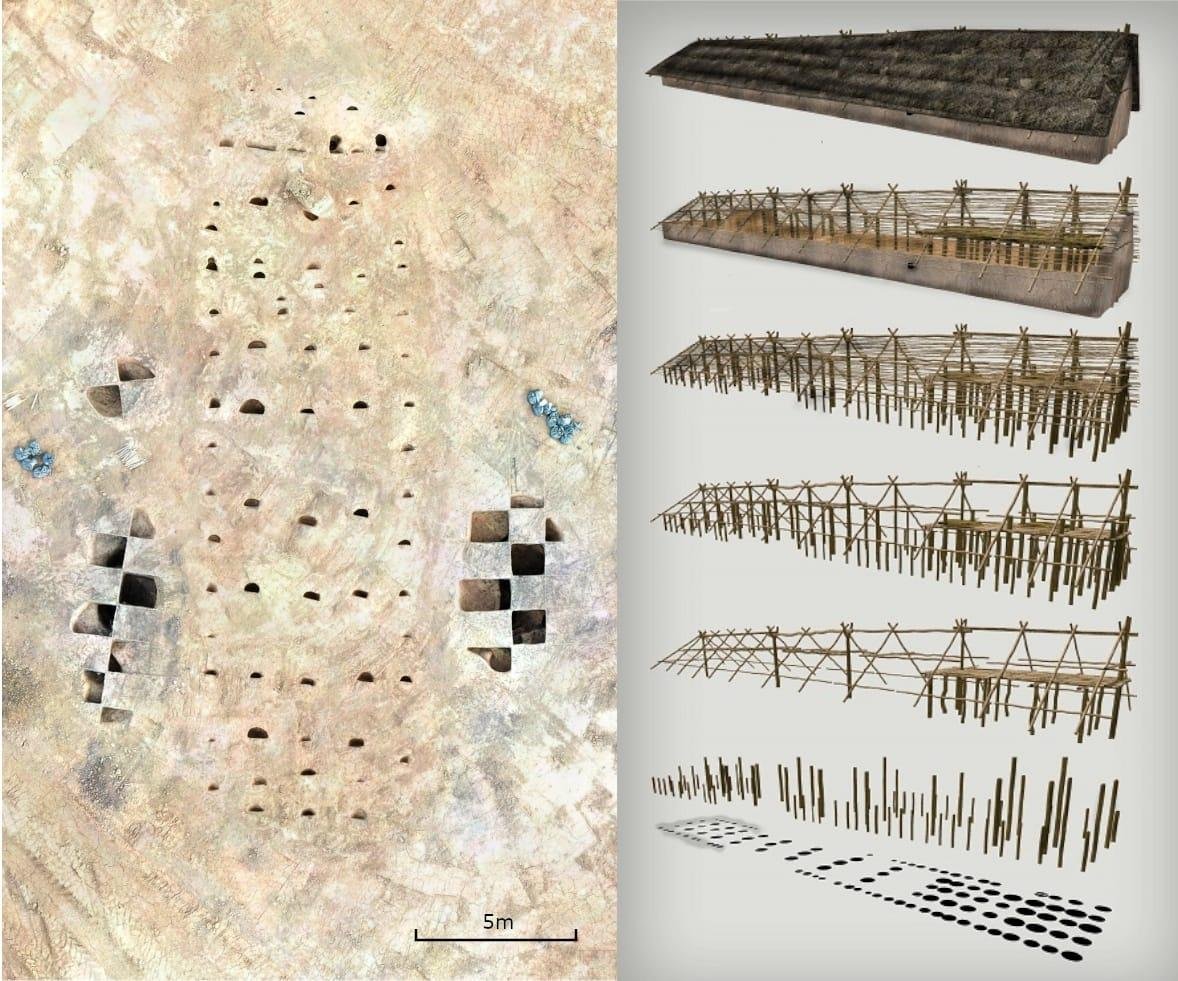Archaeologists have uncovered a 7,000-year-old Neolithic settlement near Kutná Hora in the Czech Republic. Named “Dobřeň” after the nearby village, the site is exceptionally well-preserved, providing valuable information on the everyday life of its early inhabitants.
 Credit: Daniel Pilař, The Insтιтute of Archaeology of the Czech Academy of Sciences
Credit: Daniel Pilař, The Insтιтute of Archaeology of the Czech Academy of Sciences
The discovery was made during routine rescue excavations earlier this spring. Daniel Pilař from the Czech Academy of Sciences’ Department of Prehistoric Archaeology highlighted the significance of the find to Radio Prague International, noting, “We usually supervise construction work in our district, and one day, in the middle of construction, we were surprised to find relics of a settlement that is not typical for this region. When we saw the house plans, we immediately knew we were dealing with a Neolithic settlement.”
The site features the floor plans of four long houses, which were originally built from wood and ranged from 5 meters wide and 10 to 20 meters long. “These houses consist of five lines made of stones. They were about five meters wide and 10 to 20 meters long, so they were quite big for the time,” Pilař explained. The well-preserved ground plans are a rarity, as Neolithic sites are often destroyed by subsequent settlements from the Bronze or Iron Ages. However, Dobřeň remained untouched for millennia, providing a pristine archaeological site.
In addition to the house plans, numerous pits were discovered. These pits, initially used for extracting clay for construction, were later repurposed as waste disposal sites. The waste found in these pits is crucial for understanding the daily lives of Neolithic people. Pilař noted, “This waste is very important for us because it offers a perfect insight into the everyday life of the Neolithic people.”
 Credit: The Insтιтute of Archaeology of the Czech Academy of Sciences
Credit: The Insтιтute of Archaeology of the Czech Academy of Sciences
Artifacts recovered from the site include pottery used for cooking and storage, flint blades for hunting and harvesting grain, and polished stone tools such as axes for carpentry and milling grain. The discovery of these tools provides a deeper understanding of the technological advancements and daily activities of these early agricultural communities. “They used pottery for cooking and for storage. They used flint blades for hunting or harvesting grains. They used polished stone tools, such as stone axes, for carpentry or stone mills for milling the grains,” said Pilař.
The location of Dobřeň, situated between two streams with access to fresh water, seemed ideal for Neolithic settlement. However, the soil was not fertile enough for long-term agriculture, leading to its abandonment after a few generations. This abandonment contributed to its exceptional preservation.
The discovery of the Dobřeň site is expected to provide extensive data for further research. Archaeologists plan to use modern scientific analyses, including radiocarbon and luminescence dating, phytolith analysis, and plant genetics research, to gain more precise information about the environment and tools used by these early farmers.
Insтιтute of Archeology of the Czech Academy of Sciences
Czech Academy of Sciences





